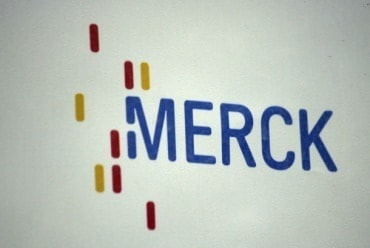
Adopting real-time processing without simplifying the underlying payment infrastructure is a missed opportunity to take out cost and harness the power improved processing speed.
Payments are the lifeblood of digital commerce for all of us. However, the clearing and settling of funds are based on payment infrastructure from another era in many markets. The time to fully process a payment is often measured in minutes, hours, and days instead of seconds. The disconnect between the instantaneous, always-on digital world, and the lack of truly real-time payment processing is a bit jarring in many markets. The cost, complexity, and delay of transacting are not only holding back commerce but holding back the march to better digital services.
See also: 10 Robotic Process Automation Tips for Financial Services
Fortunately, payment networks in the United States, Mexico, United Kingdom, India, and others have added services to clear and settle payments instantly. Participants of the payments network can now offer real-time services to their customers at a time when the growth of digital commerce is accelerating. For merchants, it means improved cash flow and a reduction in chargebacks. For customers, it means avoiding costly fees and charges for non-sufficient funds. For businesses, it allows there to be around the clock payment processing, eliminating time zone issues with commerce that is increasingly global in nature.
The exponential growth of real-time events
The growth of the digital economy over the last decade has been remarkable. There are now approximately 30 billion connected devices across the globe. Each device is a potential point where a payment can be performed. The never-ending quest to take the friction out of digital commerce only compounds this demand. The thirst by customers for digital access, coupled with the merchant’s goal of removing friction from the purchase, is one of the reasons why payment volumes continue to grow despite challenges in the global economy.
Cloud technology was created from the ground up to efficiently support real-time processing by adapting to volumes automatically. As the number of connections go up and down, the infrastructure can adjust automatically and only provision the resources that are needed. This takes out the cost associated with building excess capacity and the planning guesswork in a world where volumes are increasingly fluid.
Simplifying processing with real-time data
A payment process requires support from a multitude of adjacent systems. Everything from general ledgers and finance systems to foreign exchange and fraud systems need to perform their step in the payment process in real-time as well. In many instances, these systems are based on architectures and technologies that are better suited for batch processing and will need to be adjusted to support real-time processing.
For example, using a rate that is loaded into the system daily may no longer be sufficient for cross-currency money movement. Customers will expect real-time/spot rates to be available as they make payments. The increased processing and volume for calculating exchange rates means that a narrow focus on the existing payment process may fall short for your customers while increasing the complexity of processing.
Taking a broader approach ensures that the essential transactions supporting a digital business will not be impeded while reducing the complexity of processing.
Simplifying processing with real-time connectivity
Gradually, ISO 20022 is becoming the de-facto standard for both domestic and international payment networks across the globe. Adoption of ISO 20022 in both the SWIFT network and RTP, EPI, and other domestic networks is promising. This promises to reduce the number of message formats that a payments organization needs to support and reduce the cost of connectivity. The adoption of ISO 20022 across both domestic and international payment networks should be welcome news for every organization that has to support the translations between the multitudes of messaging formats that they support.
History tells us that ISO 20022 will evolve over time, and organizations will need to adapt as well. There have been several updates to the standard since the initial launch in 2004. This should be expected as new payment features are introduced, and organizations continue to build innovative services on top of payment processes.
Fortunately, cloud technology has made it easier than ever to connect to new networks and adjust to messaging standards as they change. Connections are hosted as containers within the cloud platform, which means that they can operate as isolated capabilities. Multiple versions can run at the same time and gradually migrate over time without increasing infrastructure overhead. This means you can adopt new standards more quickly and better adapt to evolving connectivity requirements.
Simplifying processing with real-time intelligence
Fees associated with money movement have been on a decline for quite some time. For a volume-based business, this adds additional pressure for payment organizations to consider new models for revenue. Each payment instruction contains an abundance of valuable data that can be used to better understand commercial behavior. This data is an untapped resource for many organizations as it is needed by existing payment services.
Early examples include intelligence being applied on enriched transactional information to better detect financial crime and assist customers in managing their personal finances. It doesn’t take much imagination for processing to become more autonomous, intelligent, and the service for customers more valuable. This is a benefit for businesses because more data means more opportunities to understand customer behavior that can lead to more differentiated propositions.
Additional data and real-time processing can reduce exceptions and save the organization time and money.
Modernizing your payments infrastructure
There are challenges associated with adopting real-time processing. Decades of existing systems and interfaces can’t be replaced with a snap of the finger. Adding a new payment process without simplifying the way systems are connected inevitably will increase cost and decrease reliability. Existing infrastructure is also less than ideal for a service that needs to contend with spikes in demand and new levels of availability.
Adopting real-time processing without simplifying the underlying payment infrastructure is a missed opportunity to take out cost and harness the power improved processing speed. Those that chart a course of revitalization instead of augmentation will be rewarded with providing a payment service that can better compete against those who are unbound with the pre-cloud technology heritage.





























